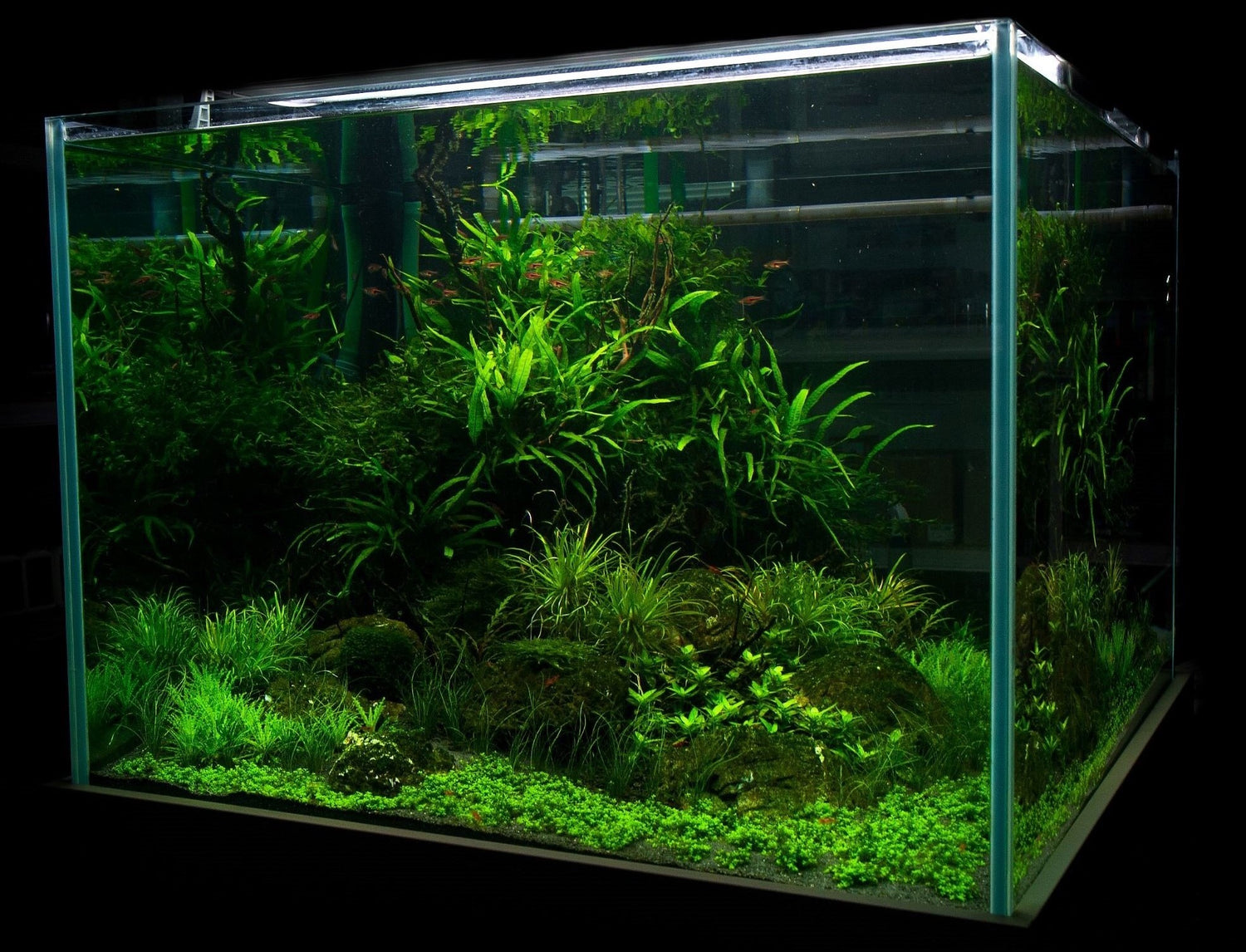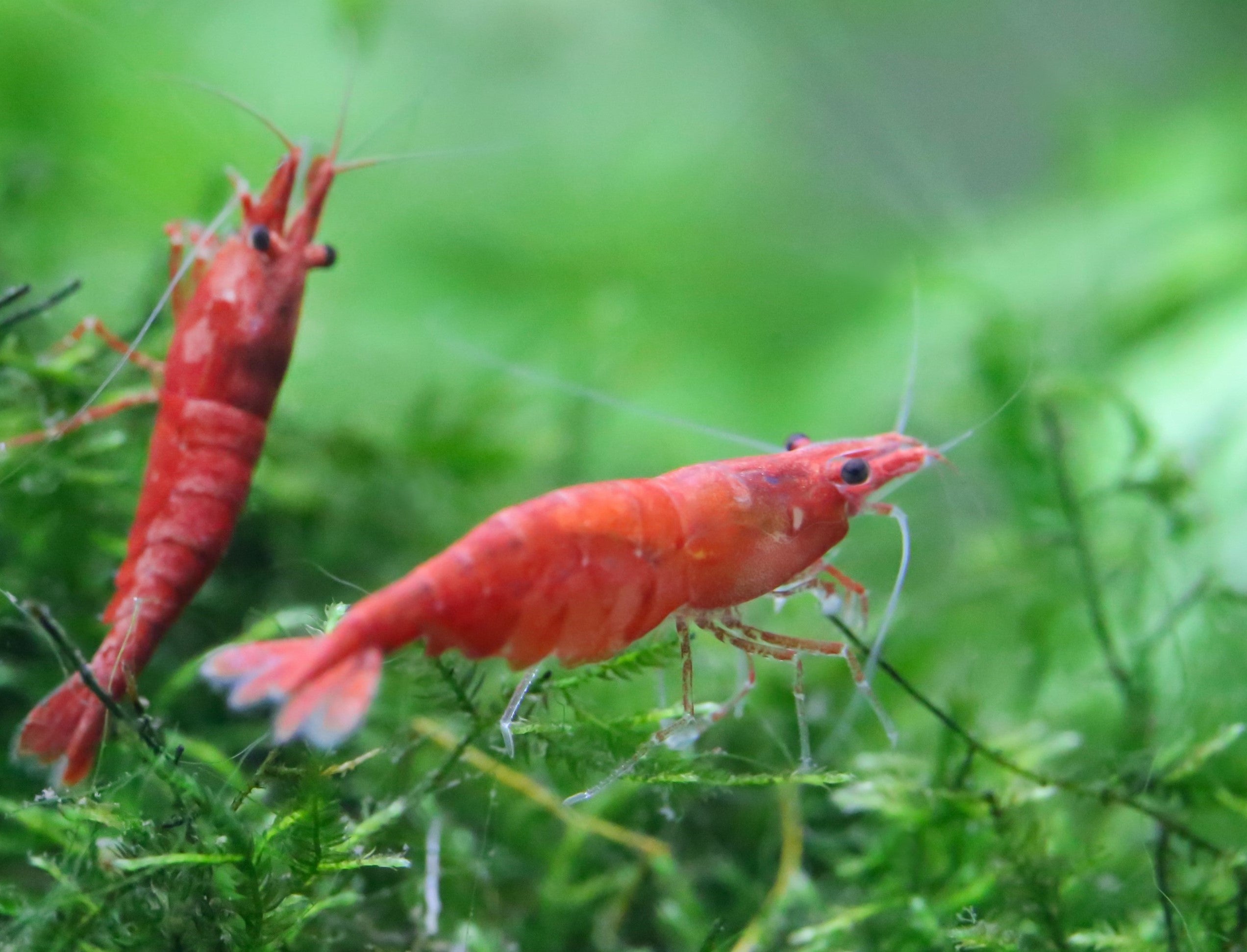Why Low Tech?
High tech planted tanks are popular but require a lot of regular maintenance sessions to keep them looking their best. For most people a low tech planted tank is a much more suitable option if you have a busy life or have more than one tank. Low tech planted tanks are also very popular and can be just as impactful as high tech aquascapes. Almost any aquarium can be setup as a low tech planted tank with minimal effort. Low tech planted tanks are lower energy systems, meaning everything is low intensity and changes happen at a slower rate. This means lights are dimmer and there is no CO2 injection, and you will expect to see slower plant growth. In general, slow growing hardy plants work best in low tech setups as they are less demanding in terms of lighting and nutrient levels. Low tech planted tanks require less frequent trimming and use less power. However, that is not to say they do not need long term care to achieve good results but if you are running late for a water change this should not cause too much of a big problem. In this article I will discuss some tips and tricks on how to achieve long term success with your low tech planted tank.
Low Tech Planted Tank Tips:
When setting up your aquascape think about the fully grown size of the plants, scape your tank ensuring there is adequate open space and flow. Think about the plant species you are planning to keep before purchasing your substrate, if you have a lot of root feeding plants then aqua soil is the best choice but keep in mind sand or fine gravel can also work well long term with the addition of root tablets. If you want to mainly keep epiphyte plants like Anubias then an inert substrate is fine. In general aim to have 80% slower growing plant species, these will work well long term and will need minimal trimming. It is worth adding a small amount of fast growing stem plants which are great for a newly planted tank, they keep nitrates low and help compete against algae during the most delicate time of the setup at the start of its life. If you do not want any stem plants in your aquascape, floating plants also work well when establishing a new planted tank and can be removed after the first few months of the setup if you wish. Put your aquarium light on a timer and aim for around 6-8 hours of light. Make sure you cycle your tank and do not over stock or over feed your fish. Keep up with weekly water changes, this will help keep algae at bay and will also replenish micronutrients for your plants. Dosing a fertiliser every few days for your plants will also help you achieve long term success with your new planted tank. Lastly, do not over trim your plants in a low tech setup as they will take longer to bounce back and if over trimmed their growth can become stunted and algae can start to take hold. Lastly have fun! Take some time as often as you can to enjoy your tank, after all that is what it is there for.
Pro Tip: Take care to regularly monitor your tank and fish, keep an eye out for algae and plant deficiencies starting to develop. Act quickly but do not overreact, it can take weeks or months to solve issues like algae.
AQUAnatur
AQUAnatur was created by an established UK aquarium installation and maintenance company near London which has been running for over 25 years! Our team are very experienced and happy to help offer advice with any aquarium questions. We are always available via phone or email Monday -Friday, feel free to contact us, we would love to help! AQUAnatur supply a range of aquariums and aquascaping products. If you have a question, please leave a comment or contact us via phone or email.
By Alasdair McPhail




Leave a comment
All comments are moderated before being published.
This site is protected by hCaptcha and the hCaptcha Privacy Policy and Terms of Service apply.